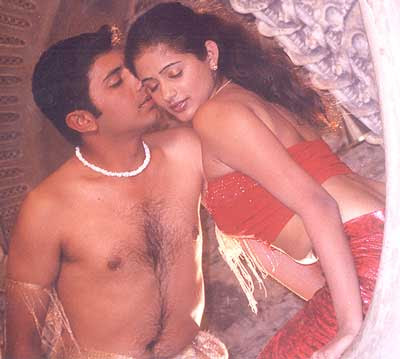
Edmund Hillary, First Atop Everest, Dies
Sir Edmund Hillary, the unassuming beekeeper who conquered Mount Everest to win renown as one of the 20th century's greatest adventurers, died Friday. He was 88.
The gangling New Zealander devoted much of his life to aiding the mountain people of Nepal and took his fame in stride, preferring to be called Ed and considering himself an "ordinary person with ordinary qualities."
Hillary died at Auckland Hospital about 9 a.m. Friday from a heart attack, said a statement from the Auckland District Health Board. Though ailing in his later years, he remained active.
His life was marked by grand achievements, high adventure, discovery, excitement — but he was especially pround of his decades-long campaign to set up schools and health clinics in Nepal, the homeland of Tenzing Norgay, the mountain guide with whom he stood arm in arm on the 29,035-foot summit of Everest on May 29, 1953.
Yet he was humble to the point that he only admitted being the first man atop Everest long after the death of Tenzing.
He wrote of the pair's final steps to the top of the world: "Another few weary steps and there was nothing above us but the sky. There was no false cornice, no final pinnacle. We were standing together on the summit. There was enough space for about six people. We had conquered Everest.
"Awe, wonder, humility, pride, exaltation — these surely ought to be the confused emotions of the first men to stand on the highest peak on Earth, after so many others had failed," Hillary noted.
"I removed my oxygen mask to take some pictures. It wasn't enough just to get to the top. We had to get back with the evidence. Fifteen minutes later we began the descent."
Then, upon arriving back at base camp, he took an irreverent view: "We knocked the bastard off."
His philosophy of life was simple: "Adventuring can be for the ordinary person with ordinary qualities, such as I regard myself," he said in a 1975 interview after writing his autobiography, "Nothing Venture, Nothing Win."
But New Zealand Prime Minister Helen Clark, announcing his death, said Hillary was anything but ordinary.
"Sir Ed described himself as an average New Zealander with modest abilities. In reality, he was a colossus. He was an heroic figure who not only 'knocked off' Everest but lived a life of determination, humility, and generosity. ... The legendary mountaineer, adventurer, and philanthropist is the best-known New Zealander ever to have lived."
Close friends described him as having unbounded enthusiasm for both life and adventure.
"We all have dreams — but Ed has dreams, then he's got this incredible drive, and goes ahead and does it," long-time friend Jim Wilson said in 1993.
Hillary summarized it for schoolchildren in 1998, when he said one didn't have to be a genius to do well in life.
"I think it all comes down to motivation. If you really want to do something, you will work hard for it," he said before planting some endangered Himalayan oaks on the school grounds.
Hillary made his last visit to the Himalayas in April 2007, when he and Elizabeth Hawley — unofficial chronicler of expeditions in the Himalayas for 40 years — met the 2007 SuperSherpas Expedition in Katmandu.
A year earlier, he joined a flight of New Zealand dignitaries who flew to Antarctica for the 50th anniversary of the Scott Base, which the adventurer helped build in 1957.
Unlike many climbers, Hillary said when he died he had no desire to have his remains left on a mountain. He wanted his ashes scattered on Waitemata Harbor in the northern city of Auckland where he lived his life.
"To be washed gently ashore, maybe on the many pleasant beaches near the place I was born. Then the full circle of my life will be complete," he said.
Spokesman Mark Sainsbury said Hillary's family had accepted the offer of a state funeral, on a date not yet set.
Tributes quickly began flowing.
"Sir Edmund's name is synonymous with adventure, with achievement, with dreaming and then making those dreams come true," said Australia's acting Prime Minister Julia Gillard.
"He was a hero and a leader for us. He had done a lot for the people of Everest region and will always remain in our hearts," said Bhoomi Lama of the Nepal Mountaineering Association in Katmandu.
Hillary remains the only non-political person outside Britain honored as a member of the Britain's Order of the Garter, bestowed by Queen Elizabeth II on just 24 knights and ladies living worldwide at any time.
Before Tenzing's death in 1986, Hillary consistently refused to confirm he was first, saying he and the Sherpa had climbed as a team to the top. It was a measure of his personal modesty, and of his commitment to his colleagues.
In his 1999 book "View from the Summit," Hillary finally broke his long public silence about whether it was he or Tenzing who was the first man to step atop Everest.
"We drew closer together as Tenzing brought in the slack on the rope. I continued cutting a line of steps upwards. Next moment I had moved onto a flattish exposed area of snow with nothing but space in every direction," Hillary wrote.
"Tenzing quickly joined me and we looked round in wonder. To our immense satisfaction we realized with had reached the top of the world."
He later recalled his surprise at the huge international interest in their feat. "I was a bit taken aback to tell you the truth. I was absolutely astonished that everyone should be so interested in us just climbing a mountain."
Hillary never forgot Nepal, which he visited frequently over the next 54 years.
Without fanfare and without compensation, Hillary spend decades pouring energy and resources from his own fund-raising efforts into Nepal through the Himalayan Trust he founded in 1962.
Known as "burra sahib" — "big man," for his 6-foot-2-inch frame — by the Nepalese, Hillary funded and helped build hospitals, health clinics, airfields and schools.
He raised funds for higher education for Sherpa families, and helped set up reforestation programs in the impoverished country. About $250,000 a year was raised by the charity for projects in Nepal.
A strong conservationist, he demanded that international mountaineers clean up thousands of tons of discarded oxygen bottles, food containers and other climbing debris that litter an area known as South Col valley, the jump-off point for Everest attempts.
His commitment to Nepal took him back more than 120 times. His adventurer son Peter has described his father's humanitarian work there as "his duty" to those who had helped him.
It was on a visit to Nepal that his first wife, Louise, 43, and 16-year-old daughter Belinda died in a light plane crash March 31, 1975.
Hillary remarried in 1990, to June Mulgrew, former wife of adventurer colleague and close friend Peter Mulgrew, who died in a passenger plane crash in the Antarctic. He is survived by his wife and children Peter and Sarah.
His passport described Hillary as an "author-lecturer," and by age 40 his schedule of lecturing and writing meant he had to give up beekeeping "because I was too busy."
By that time he was touring, lecturing and fund-raising for the Himalayan Trust in the United States and Europe for three months at a time, speaking at more than 100 venues during a tour.
He was known as ready to take risks to achieve his goals, but always had control so that nobody ever died on a Hillary-led expedition.
He was at times controversial. He decried what he considered a lack of "honest-to-God morality" in New Zealand politics in the 1960s, and he refused to backtrack when the prime minister demanded he withdraw the comments. Ordinary New Zealanders applauded his integrity.
He got into hot water over what became known as his "dash to the Pole" in the 1957-58 Antarctic summer season aboard modified farm tractors while part of a joint British-New Zealand expedition.
Hillary disregarded instructions from the Briton leading the expedition and guided his tractor team up the then-untraversed Shelton Glacier, pioneering a new route to the polar plateau and the South Pole.
In 2006 he entered a dispute over the death of Everest climber David Sharp, stating it was "horrifying" that climbers could leave a dying man after an expedition left the Briton to die high on the upper slopes.
Hillary said he would have abandoned his own pioneering 1953 climb to save another life.
"It was wrong if there was a man suffering altitude problems and was huddled under a rock, just to lift your hat, say 'good morning' and pass on by," he said. "Human life is far more important than just getting to the top of a mountain."
Named New Zealand's ambassador to India in the mid-1980s, Hillary was the celebrity of the New Delhi cocktail circuit. He later said he found the job confining.
He introduced jetboats to many Ganges River dwellers a decade earlier, in 1977, when his "Ocean to the Sky" expedition traveled the Ganges by jetboat to within 130 miles of its source.
The last segment was by foot, and two mountain peaks near Badranath, where the Ganges rises, were also climbed. He sought adventure in places as distant from each other as the Arctic and Antarctic.
Hillary didn't place himself among top mountaineers. "I don't regard myself as a cracking good climber. I'm just strong in the back. I have a lot of enthusiasm and I'm good on ice," he said.
The first living New Zealander to be featured on a banknote, he helped raise nearly $530,000 for the Himalayan Trust by signing 1,000 of the sparkling new five-dollar bills sold at a charity auction in 1982. They were snapped up by collectors round the world.
Honored by the United Nations as one of its Global 500 conservationists in 1987, he was also awarded numerous honorary doctorates from universities in several parts of the world.
One of his accolades was the Smithsonian Institution's James Smithson Bicentennial Medal for his "monumental explorations and humanitarian achievements," awarded in 1998.
Throughout his life Hillary remembered his first mountain he climbed, the 9,645-foot Mount Tapuaenuku — "Tappy" as he called it — in Marlborough on New Zealand's South Island. He scaled it solo over three days in 1944, while in training camp with the Royal New Zealand Air Force during World War II. "Tapuaenuku" in Maori means "footsteps of the Rainbow God."
"I'd climbed a decent mountain at last," he said later.
Like all good mountaineers before him, Hillary had no special insight into that quintessential question: Why climb?
"I can't give you any fresh answers to why a man climbs mountains. The majority still go just to climb them."





















